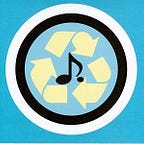Roll With The Changes
Summer Tour So Far
A confession: the month before this tour began I made the pessimistic prediction that this would be a transitional year, and a step back from the heights achieved in 2013. With my immersion in 1994, there were just too many similarities to ignore — a new, divisive album ready to squeeze its way into setlists, the inflated expectations coming off of a career year/anniversary milestone, and the sense of something new on the horizon, something indistinct, fuzzy in its boundaries, barely visible to band and fans alike.
At this mid-tour pause, I’m ready to declare my forecast half-right and half-wrong. Through 14 shows, it’s even more apparent that we’re viewing a band at a crossroads, but rather than wincing while they fumble blindly for a new path (as I not infrequently did working through Spring 1994), it’s been a joy to watch them plot their next move. So far, the tour has drawn from virtually every trick they’ve relearned, gathered, and invented since 2009, mixed it up with the Fuego material and new setlist constraints, and let things roll in a way that has been at times exhilarating, at times befuddling, but never dull or predictable.
If eras are largely defined by their improvisational style, good luck finding a tidy category for this year so far. The audacious Harry Hood in the Mansfield opener suggested a return to the mercurial style of summer 2013, which reached its apex in Tahoe — the band cycling rapidly through themes but remaining cohesive and connected, producing a dizzying kaleidoscope of spontaneous patterns. But then the twin Fuegos of SPAC and Mann suggested a different approach altogether, Miller-Urey experiments of smoldering ooze waiting for inspiration to strike before blasting off, more similar to the slower-paced jamming of Fall 2013. Great, except two Chalkdusts in five days moved the needle back to hyper-jamming, with the second anchoring an hour-long suite that suddenly recontextualized the Tahoe Tweezer as a beginning, not a conclusion.
After Randall’s, the parameters were set: a deep, exploratory early second set jam would be the battleground between the fluid style of Summer ‘13 and the patient voyages of Fall ‘13. So of course, immediately after CMAC’s Disease flirted with the 20-minute barrier yet again, they changed the script, focusing instead on unexpected segues, recurring teases, and — most challengingly — cohesive sets. The longer shows of 3.0 have handicapped the set construction of old, when most of those treasured four- or five-song frames barely pushed past the hour mark. But as The Baby’s Mouth wrote last weekend, the leap forward of 2014 may actually turn out to be the return of longform structure to sets.
After a stumble in suburban Detroit that regressed to the over-pressing days of 2011 and early 2012, Chicago received three second sets that followed a clear arc without sacrificing overall length. Friday night, in particular, carried a common thread through the first hour of the second set, seemingly returning to the same interstitial party-funk template laid out by the opening Golden Age between songs. When that mood landed perfectly on a raucous Wombat, it only made sense for the ensuing improvisation to burst into new territory, fueled by the 60 minutes of context that came before it. Saturday’s tease-fest and Sunday’s sprint to the finish line also exceeded the sum of their parts, with more unexpected jams and creative segues to keep fans off-balance and engaged.
The new material has obviously contributed to this unpredictability and creativity, but I’d argue that the choice to go stingy on the covers carries even more weight. Constraints have always been important for pushing the band into new spaces, and it’s very possible that we wouldn’t see such abruptly expanding possibilities for very old songs such as Chalkdust, Hood, and (still shocked) The Wedge without kicking away some of their cover-band crutches. Even a set like DTE that never gained traction still flounders in fascinating fashion, giving us the first-ever Mike’s > Ghost, the first-ever 2001 encore, and a Tweezer/Fuego/Tweeprise sandwich. The Piper on the first night of Northerly could have easily bled into yet another Boogie On, but instead gave us a rearranged-on-the-spot Halley’s Comet, that threw more gas on the set’s fire.
Now, two-thirds of the way through the summer, the tour feels like one of those multi-sided dies used in role-playing games, and well…they keep it rolling. One reason why so many of us are unhealthily obsessed with this band is their multi-dimensionality — in one three-night stand, they can be goofball progsters Friday, arena-pleasing rockers Saturday, and avant-garde aggressors on Sunday. And yet with different fans holding, sometimes all too tightly, to different preferences, I’m not surprised that the intensified randomness of this tour has drawn some controversy. If one persona shows up on a given night, there’s going to be at least a few fans wishing for a missing, preferred incarnation.
One thing Phish fans crave more than anything else is narrative, a story to tell ourselves that makes the twists and turns of the band’s career make sense. But at the dawn of the band’s fourth decade, it sounds like they’re searching for the next chapter every bit as hard as we are, exploring a wide spectra of sounds and approaches to find the next wavelength to ride. It will probably all make sense in retrospect, when we know where the path out of 2014 eventually led. But there’s a pleasure in experiencing these indecisive early stages, a pregnant moment when the possibilities have yet to be winnowed.
